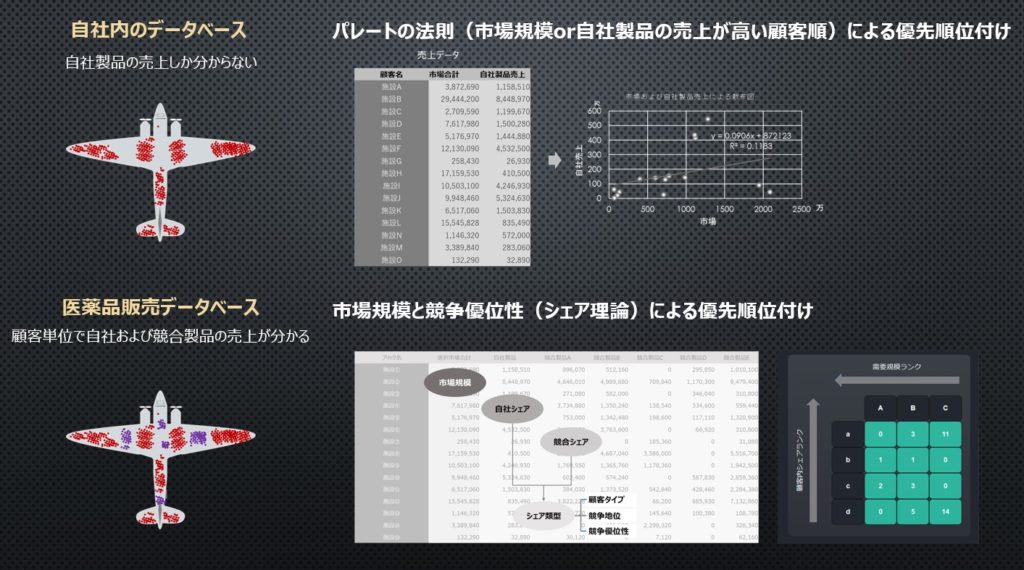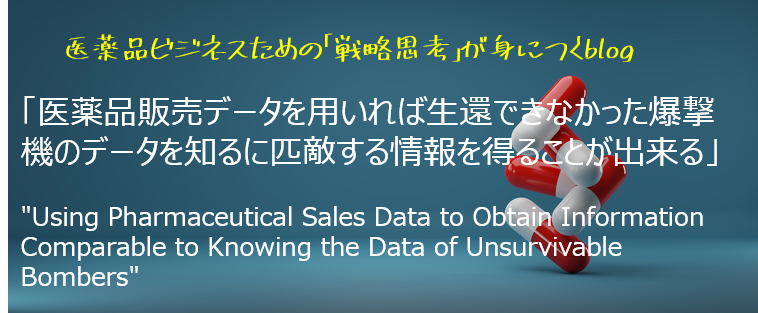
前回の投稿では、爆撃機の装甲強化を例に、見えるデータにばかり目を向けすぎると、実態を見落とす「生存者バイアス」に陥る危険性についてご紹介をさせていただきました。
もし、社内で取得可能な自社製品の売上データしかなかったら?
データは弾が当たっても生還できた爆撃機のもしかなく、生還できなかった爆撃機のデータが存在しないのと同じであり、すなわち既存顧客での売上データだけで意思決定を行うことになります。
パレートの法則による、売上の高い顧客への過剰なリソース投下は、競合との競争環境を激化させ、消耗戦を引き起こします。
しかし医薬品販売データを用いれば、生還できなかった爆撃機のデータ、すなわち市場/顧客と競合、そして自社の3Cのデータを入手することになります。
その結果として、市場規模と競争優位性から、リソースアロケーションを維持、強化、縮小、撤退の4つ分類することで、限られた経営資源を無駄なく効率的に使い切ることが出来るようになります。
“Using Pharmaceutical Sales Data to Obtain Information Comparable to Knowing the Data of Unsurvivable Bombers”
In our previous post, we discussed the danger of falling into the “survivor bias” trap, where one focuses solely on visible data, using the example of armored bombers.
But what if you only have access to own company’s sales data for your products?
This data might be akin to the information from bombers that survived hits, with no data available on those that didn’t survive. In other words, you might be making decisions based solely on sales data from existing customers.
Due to the Pareto Principle, over-investing resources in high-yield customers can lead to increased competition from rivals and a war of attrition.
However, by utilizing pharmaceutical sales data, you can gain insights equivalent to knowing the data of bombers that didn’t survive, in other words, data about the market, customers, competitors, and your own 3Cs.
As a result, by categorizing resource allocation into four types: maintain, strengthen, reduce, or withdraw, based on market size and competitive advantage, you can efficiently utilize your limited managerial resources without waste.

